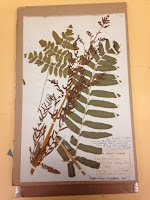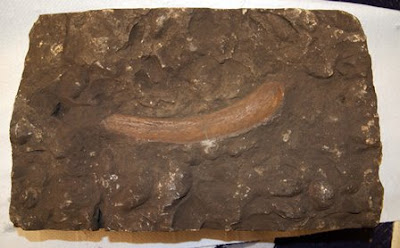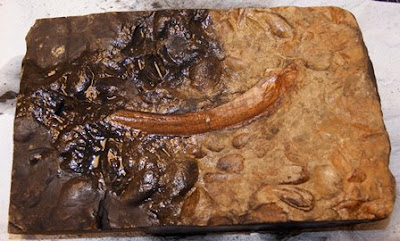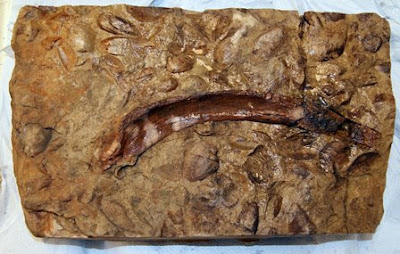During my placement at the Discovery Centre I have been documenting the Herbarium collection donated to Leeds Museums by the University of Leeds.
Conserving delicate plants
The herbarium sheets, cones and seeds that I am working with are stacked in groups by the species to which they belong and groups of species folders are then placed together into larger folders by genus. The genus folders are then sorted by taxonomic family.The sheets have been temporarily stored in plastic wrapping and so I am unpacking the bundles and re-storing them in new conservation-grade boxes. Some of the specimens have been mounted on newspaper like the one above and you can see how the paper has become discoloured over time. I will have to re-mount some of the specimens on to acid-free paper to preserve them for the future.
Why do we preserve herbaria?
Herbaria are important for studying plant taxonomy, studying geographic distributions and in cataloguing the flora of a certain area. |
(Osmunda regalis)
|
This example I found in the collection is Osmunda regalis a species of deciduous fern collected in York in 1877. If you look closely at the handwritten note above the label, in 1927 (forty years later)
'In spite of reports that Osmunda was all gone from Askham Bog, I am glad to learn that it still survives on one spot, in small quantity….but strictly preserved.'
Another note below this says 'Happily increasing by protection 1936!'
This Osmunda regalis (above, left) is a perfect example of herbarium specimens being used to keep track of plants over time.
 |
| (Antirrhinum Majus) |
Pictured above is Antirrhinum majus, collected by Ida M. Roper in 1829. These plants were often called ‘snapdragons’ and were thought to have supernatural powers to provide protection against witchcraft. This is probably because when the flowers die they leave behind seed pods that look like skulls. This specimen has some interesting newspaper clippings that show these macabre seed pods.
Finally, these are my favourite specimens found so far in the herbarium collection. I think they are beautiful and delicate, they could almost have been painted in watercolours.
By Gemma Bailey, Herbarium Work Placement Student, University of Manchester





















